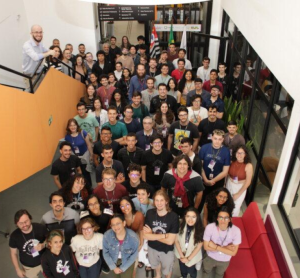
Publicações de James Almeida
de Paula Silva, Monyque Karoline; Nicoleti, Vitória Yumi Uetuki; da Paixão Perez Rodrigues, Barbara; Araujo, Ademir Sergio Ferreira; Ellwanger, Joel Henrique; de Almeida, James M.; Lemos, Leandro Nascimento Exploring deep learning in phage discovery and characterization Journal Article Em: Virology, 2025, ISSN: 0042-6822. Resumo | Links | BibTeX | Tags: Ipaves, Bruno; Justo, João F.; de Almeida, James M.; Assali, Lucy V. C.; Autreto, Pedro A. S. Enhancing catalyst activity of two-dimensional C4N2 through doping for the hydrogen evolution reaction Working paper 2025. Resumo | Links | BibTeX | Tags: Petry, Romana; de Almeida, James M.; Côa, Francine; de Lima, F. Crasto; Martinez, Diego Stéfani T; Fazzio, Adalberto Interaction of graphene oxide with tannic acid: computational modeling and toxicity mitigation in C. elegans Journal Article Em: Beilstein J. Nanotechnol., vol. 15, pp. 1297–1311, 2024, ISSN: 2190-4286. Resumo | Links | BibTeX | Tags: Cala, Paula; Dariani, Guilherme; Veiga, Eduardo; Macedo, Pedro; Paula, Amauri J.; de Almeida, James M. Predictive Modeling of Surface Tension in Chemical Compounds: Uncovering Crucial Features with Machine Learning Journal Article Em: J. Braz. Chem. Soc., 2024, ISSN: 1678-4790. Resumo | Links | BibTeX | Tags: Lucchetti, Lanna E. B.; Autreto, Pedro A. S.; Santos, Mauro C.; de Almeida, James M. Cerium doped graphene-based materials towards oxygen reduction reaction catalysis Journal Article Em: Materials Today Communications, vol. 38, pp. 108461, 2024, ISSN: 2352-4928. Resumo | Links | BibTeX | Tags: Cerium, Density functional theory, Graphene, Oxygen reduction reaction Trench, Aline B.; Fernandes, Caio Machado; Moura, João Paulo C.; Lucchetti, Lanna E. B.; Lima, Thays S.; Antonin, Vanessa S.; de Almeida, James M.; Autreto, Pedro A. S.; Robles, Irma; Motheo, Artur J.; Lanza, Marcos R. V.; Santos, Mauro C. Hydrogen peroxide electrogeneration from O2 electroreduction: A review focusing on carbon electrocatalysts and environmental applications Journal Article Em: Chemosphere, pp. 141456, 2024, ISSN: 0045-6535. Resumo | Links | BibTeX | Tags: Carbon materials, Environmental applications, Hydrogen peroxide, Oxygen reduction reaction, Theoretical simulations de Almeida, James M.; Ferreira, Conny Cerai; Bandeira, Lucas; Cunha, Renato D.; Coutinho-Neto, Maurício Domingues; Homem-de-Mello, Paula; Orestes, Ednilsom; Nascimento, Regina Sandra Veiga Em: The Journal of Physical Chemistry B, vol. 0, não 0, pp. null, 2023, (PMID: 37871185). Resumo | Links | BibTeX | Tags: Antonin, Vanessa S.; Lucchetti, Lanna E. B.; Souza, Felipe M.; Pinheiro, Victor S.; Moura, João P. C.; Trench, Aline B.; de Almeida, James M.; Autreto, Pedro A. S.; Lanza, Marcos R. V.; Santos, Mauro C. Sodium niobate microcubes decorated with ceria nanorods for hydrogen peroxide electrogeneration: An experimental and theoretical study Journal Article Em: Journal of Alloys and Compounds, vol. 965, 2023, ISSN: 0925-8388. Resumo | Links | BibTeX | Tags: Materials Chemistry, Mechanical Engineering, Mechanics of Materials, Metals and Alloys Lucchetti, Lanna E. B.; Autreto, Pedro A. S.; de Almeida, James M.; Santos, Mauro C.; Siahrostami, Samira Unravelling catalytic activity trends in ceria surfaces toward the oxygen reduction and water oxidation reactions Journal Article Em: React. Chem. Eng., vol. 8, não 6, pp. 1285–1293, 2023, ISSN: 2058-9883. Resumo | Links | BibTeX | Tags: Catalysis, Chemical Engineering (miscellaneous), Chemistry (miscellaneous), Fluid Flow and Transfer Processes, Process Chemistry and Technology2025
@article{dePaulaSilva2025,
title = {Exploring deep learning in phage discovery and characterization},
author = {Monyque Karoline de Paula Silva and Vitória Yumi Uetuki Nicoleti and Barbara da Paixão Perez Rodrigues and Ademir Sergio Ferreira Araujo and Joel Henrique Ellwanger and James M. de Almeida and Leandro Nascimento Lemos},
doi = {10.1016/j.virol.2025.110559},
issn = {0042-6822},
year = {2025},
date = {2025-04-29},
urldate = {2025-04-00},
journal = {Virology},
publisher = {Elsevier BV},
abstract = {Bacteriophages, or bacterial viruses, play diverse ecological roles by shaping bacterial populations and also hold significant biotechnological and medical potential, including the treatment of infections caused by multidrug-resistant bacteria. The discovery of novel bacteriophages using large-scale metagenomic data has been accelerated by the accessibility of deep learning (Artificial Intelligence), the increased computing power of graphical processing units (GPUs), and new bioinformatics tools. This review addresses the recent revolution in bacteriophage research, ranging from the adoption of neural network algorithms applied to metagenomic data to the use of pre-trained language models, such as BERT, which have improved the reconstruction of viral metagenome-assembled genomes (vMAGs). This article also discusses the main aspects of bacteriophage biology using deep learning, highlighting the advances and limitations of this approach. Finally, prospects of deep-learning-based metagenomic algorithms and recommendations for future investigations are described.},
keywords = {},
pubstate = {published},
tppubtype = {article}
}
@workingpaper{ipaves2025enhancingcatalystactivitytwodimensional,
title = {Enhancing catalyst activity of two-dimensional C4N2 through doping for the hydrogen evolution reaction},
author = {Bruno Ipaves and João F. Justo and James M. de Almeida and Lucy V. C. Assali and Pedro A. S. Autreto},
url = {https://arxiv.org/abs/2502.10863},
year = {2025},
date = {2025-02-15},
urldate = {2025-01-01},
abstract = {This study investigates the structural, electronic, and catalytic properties of pristine and doped C4N2 nanosheets as potential electrocatalysts for the hydrogen evolution reaction. The pristine C36N18 nanosheets exhibit limited HER activity, primarily due to high positive Gibbs free energies (> 2.2 eV). To enhance catalytic performance, doping with B, Si, or P at the nitrogen site was explored. Among these systems, B-doped C36N17 nanosheets exhibit the most promising catalytic activity, with a Gibbs free energy close to zero (≈ -0.2 eV), indicating efficient hydrogen adsorption. Band structure, projected density of states, charge density, and Bader charge analyses reveal significant changes in the electronic environment due to doping. While stacking configurations (AA′A′′ and ABC) have minimal effect on catalytic performance, doping - particularly with B -substantially alters the electronic structure, optimizing hydrogen adsorption and facilitating efficient HER. These findings suggest that B-doped C36N17 nanosheets could serve as efficient cocatalysts when combined with metallic materials, offering a promising approach to enhance catalytic efficiency in electrocatalytic and photocatalytic applications.},
keywords = {},
pubstate = {published},
tppubtype = {workingpaper}
}
2024
@article{Petry2024,
title = {Interaction of graphene oxide with tannic acid: computational modeling and toxicity mitigation in C. elegans},
author = {Romana Petry and James M. de Almeida and Francine Côa and F. Crasto de Lima and Diego Stéfani T Martinez and Adalberto Fazzio},
doi = {10.3762/bjnano.15.105},
issn = {2190-4286},
year = {2024},
date = {2024-10-30},
urldate = {2024-10-30},
journal = {Beilstein J. Nanotechnol.},
volume = {15},
pages = {1297--1311},
publisher = {Beilstein Institut},
abstract = {Graphene oxide (GO) undergoes multiple transformations when introduced to biological and environmental media. GO surface favors the adsorption of biomolecules through different types of interaction mechanisms, modulating the biological effects of the material. In this study, we investigated the interaction of GO with tannic acid (TA) and its consequences for GO toxicity. We focused on understanding how TA interacts with GO, its impact on the material surface chemistry, colloidal stability, as well as, toxicity and biodistribution using the Caenorhabditis elegans model. Employing computational modeling, including reactive classical molecular dynamics and ab initio calculations, we reveal that TA preferentially binds to the most reactive sites on GO surfaces via the oxygen-containing groups or the carbon matrix; van der Waals interaction forces dominate the binding energy. TA exhibits a dose-dependent mitigating effect on the toxicity of GO, which can be attributed not only to the surface interactions between the molecule and the material but also to the inherent biological properties of TA in C. elegans. Our findings contribute to a deeper understanding of GO’s environmental behavior and toxicity and highlight the potential of tannic acid for the synthesis and surface functionalization of graphene-based nanomaterials, offering insights into safer nanotechnology development.},
keywords = {},
pubstate = {published},
tppubtype = {article}
}
@article{Cala2024,
title = {Predictive Modeling of Surface Tension in Chemical Compounds: Uncovering Crucial Features with Machine Learning},
author = {Paula Cala and Guilherme Dariani and Eduardo Veiga and Pedro Macedo and Amauri J. Paula and James M. de Almeida},
doi = {10.21577/0103-5053.20240110},
issn = {1678-4790},
year = {2024},
date = {2024-07-01},
urldate = {2024-00-00},
journal = {J. Braz. Chem. Soc.},
publisher = {Sociedade Brasileira de Quimica (SBQ)},
abstract = {
keywords = {},
pubstate = {published},
tppubtype = {article}
}
@article{LUCCHETTI2024108461,
title = {Cerium doped graphene-based materials towards oxygen reduction reaction catalysis},
author = {Lanna E. B. Lucchetti and Pedro A. S. Autreto and Mauro C. Santos and James M. de Almeida},
url = {https://www.sciencedirect.com/science/article/pii/S2352492824004410},
doi = {https://doi.org/10.1016/j.mtcomm.2024.108461},
issn = {2352-4928},
year = {2024},
date = {2024-02-26},
urldate = {2024-02-26},
journal = {Materials Today Communications},
volume = {38},
pages = {108461},
abstract = {With the global transition towards cleaner energy and sustainable processes, the demand for efficient catalysts, especially for the oxygen reduction reaction, has gained attention from the scientific community. This research work investigates cerium-doped graphene-based materials as catalysts for this process with density functional theory calculations. The electrochemical performance of Ce-doped graphene was assessed within the computation hydrogen electrode framework. Our findings reveal that Ce doping, especially when synergized with an oxygen atom, shows improved catalytic activity and selectivity. For instance, Ce doping in combination with an oxygen atom, located near a border, can be selective for the 2-electron pathway. Overall, the combination of Ce doping with structural defects and oxygenated functions lowers the reaction free energies for the oxygen reduction compared to pure graphene, and consequently, might improve the catalytic activity. This research sheds light from a computational perspective on Ce-doped carbon materials as a sustainable alternative to traditional costly metal-based catalysts, offering promising prospects for green energy technologies and electrochemical applications.},
keywords = {Cerium, Density functional theory, Graphene, Oxygen reduction reaction},
pubstate = {published},
tppubtype = {article}
}
@article{TRENCH2024141456,
title = {Hydrogen peroxide electrogeneration from O2 electroreduction: A review focusing on carbon electrocatalysts and environmental applications},
author = {Aline B. Trench and Caio Machado Fernandes and João Paulo C. Moura and Lanna E. B. Lucchetti and Thays S. Lima and Vanessa S. Antonin and James M. de Almeida and Pedro A. S. Autreto and Irma Robles and Artur J. Motheo and Marcos R. V. Lanza and Mauro C. Santos},
url = {https://www.sciencedirect.com/science/article/pii/S0045653524003497},
doi = {https://doi.org/10.1016/j.chemosphere.2024.141456},
issn = {0045-6535},
year = {2024},
date = {2024-02-15},
urldate = {2024-01-01},
journal = {Chemosphere},
pages = {141456},
abstract = {Hydrogen peroxide (H2O2) stands as one of the foremost utilized oxidizing agents in modern times. The established method for its production involves the intricate and costly anthraquinone process. However, a promising alternative pathway is the electrochemical hydrogen peroxide production, accomplished through the oxygen reduction reaction via a 2-electron pathway. This method not only simplifies the production process but also upholds environmental sustainability, especially when compared to the conventional anthraquinone method. In this review paper, recent works from the literature focusing on the 2-electron oxygen reduction reaction promoted by carbon electrocatalysts are summarized. The practical applications of these materials in the treatment of effluents contaminated with different pollutants (drugs, dyes, pesticides, and herbicides) are presented. Water treatment aiming to address these issues can be achieved through advanced oxidation electrochemical processes such as electro-Fenton, solar-electro-Fenton, and photo-electro-Fenton. These processes are discussed in detail in this work and the possible radicals that degrade the pollutants in each case are highlighted. The review broadens its scope to encompass contemporary computational simulations focused on the 2-electron oxygen reduction reaction, employing different models to describe carbon-based electrocatalysts. Finally, perspectives and future challenges in the area of carbon-based electrocatalysts for H2O2 electrogeneration are discussed. This review paper presents a forward-oriented viewpoint of present innovations and pragmatic implementations, delineating forthcoming challenges and prospects of this ever-evolving field.},
keywords = {Carbon materials, Environmental applications, Hydrogen peroxide, Oxygen reduction reaction, Theoretical simulations},
pubstate = {published},
tppubtype = {article}
}
2023
@article{doi:10.1021/acs.jpcb.3c01707,
title = {Synergistic Interaction of Hyperbranched Polyglycerols and Cetyltrimethylammonium Bromide for Oil/Water Interfacial Tension Reduction: A Molecular Dynamics Study},
author = {James M. de Almeida and Conny Cerai Ferreira and Lucas Bandeira and Renato D. Cunha and Maurício Domingues Coutinho-Neto and Paula Homem-de-Mello and Ednilsom Orestes and Regina Sandra Veiga Nascimento},
url = {https://doi.org/10.1021/acs.jpcb.3c01707},
doi = {10.1021/acs.jpcb.3c01707},
year = {2023},
date = {2023-10-23},
journal = {The Journal of Physical Chemistry B},
volume = {0},
number = {0},
pages = {null},
abstract = {Applying surfactants to reduce the interfacial tension (IFT) on water/oil interfaces is a proven technique. The search for new surfactants and delivery strategies is an ongoing research area with applications in many fields such as drug delivery through nanoemulsions and enhanced oil recovery. Experimentally, the combination of hyperbranched polyglycerol (HPG) with cetyltrimethylammonium bromide (CTAB) substantially reduced the observed IFT of oil/water interface, 0.9 mN/m, while HPG alone was 5.80 mN/m and CTAB alone IFT was 8.08 mN/m. Previous simulations in an aqueous solution showed that HPG is a surfactant carrier. Complementarily, in this work, we performed classical molecular dynamics simulations on combinations of CTAB and HPG with one aliphatic chain to investigate further the interaction of this pair in oil interfaces and propose the mechanism of IFT decrease. Basically, from our results, one can observe that the IFT reduction comes from a combination of effects that have not been observed for other dual systems: (i) Due to the CTAB-HPG strong interaction, a weakening of their specific and isolated interactions with the water and oil phases occurs. (ii) Aggregates enlarge the interfacial area, turning it into a less ordered interface. (iii) The spread of individual molecules charge profiles leads to the much lower interfacial tension observed with the CTAB+HPG systems.},
note = {PMID: 37871185},
keywords = {},
pubstate = {published},
tppubtype = {article}
}
@article{Antonin2023,
title = {Sodium niobate microcubes decorated with ceria nanorods for hydrogen peroxide electrogeneration: An experimental and theoretical study},
author = {Vanessa S. Antonin and Lanna E.B. Lucchetti and Felipe M. Souza and Victor S. Pinheiro and João P.C. Moura and Aline B. Trench and James M. de Almeida and Pedro A. S. Autreto and Marcos R.V. Lanza and Mauro C. Santos},
url = {https://www.sciencedirect.com/science/article/abs/pii/S092583882302666X},
doi = {10.1016/j.jallcom.2023.171363},
issn = {0925-8388},
year = {2023},
date = {2023-07-21},
urldate = {2023-11-00},
journal = {Journal of Alloys and Compounds},
volume = {965},
publisher = {Elsevier BV},
abstract = {The present work investigates the catalytic activity of NaNbO3 microcubes decorated with CeO2 nanorods on carbon (1 %, 3 %, 5 %, and 10 % w/w) for H2O2 electrogeneration. The crystalline phases and the morphology of the materials were identified with scanning electron microscopy, transmission electron microscopy, X‐ray diffraction and X-ray Photoelectronic spectroscopy. Contact angle measurements were performed to characterize the hydrophilicity of each material. The H2O2 electrogeneration was assessed by oxygen reduction reaction using the rotating ring-disk electrode technique. Electrochemical characterization results shown an enhancement on the H2O2 electrogeneration by NaNbO3 @CeO2/C-based materials compared to what was obtained with pure Vulcan XC72. The 1 % NaNbO3 @CeO2/C electrocatalyst presented the lower starting potential for the ORR and a 2.3 electron transfer, favoring the 2-electron mechanism and providing a higher H2O2 electrogeneration rate. Also, the enhancement of oxygen-containing functional groups showed the potential to comprehensively tune properties and optimize active sites and, consequently, increases the H2O2 electrogeneration. Density functional theory calculations indicated that NaNbO3 and CeO2 surfaces have a similar low theoretical overpotential for this reaction and that CeO2 improves the catalyst facilitating the electron transfer. These results indicate that NaNbO3 @CeO2/C-based electrocatalysts are promising materials for in situ H2O2 electrogeneration.},
keywords = {Materials Chemistry, Mechanical Engineering, Mechanics of Materials, Metals and Alloys},
pubstate = {published},
tppubtype = {article}
}
@article{Lucchetti2023,
title = {Unravelling catalytic activity trends in ceria surfaces toward the oxygen reduction and water oxidation reactions},
author = {Lanna E. B. Lucchetti and Pedro A. S. Autreto and James M. de Almeida and Mauro C. Santos and Samira Siahrostami},
doi = {10.1039/d3re00027c},
issn = {2058-9883},
year = {2023},
date = {2023-05-30},
journal = {React. Chem. Eng.},
volume = {8},
number = {6},
pages = {1285--1293},
publisher = {Royal Society of Chemistry (RSC)},
abstract = {
keywords = {Catalysis, Chemical Engineering (miscellaneous), Chemistry (miscellaneous), Fluid Flow and Transfer Processes, Process Chemistry and Technology},
pubstate = {published},
tppubtype = {article}
}
Destaques de James Almeida
Orientados e Supervisionados por James Almeida

Lanna Emilli Barbosa Lucchetti
Vínculo: Pós-Doutorado
Instituição: Universidade Federal do ABC (UFABC)
Laboratório: GEEDAI
Projeto: Descoberta de novos materiais catalíticos via aprendizado de máquina ativo. (CNPq)
Vínculo: Pós-Doutorado
Instituição: Centro Nacional de Pesquisa em Energia e Materiais, Laboratório Nacional de Nanotecnologia (CNPEM)
Laboratório: LNNano
Projeto: Exploração de defeitos de materiais 2D por meio de aprendizado de máquina. (CNPq)




